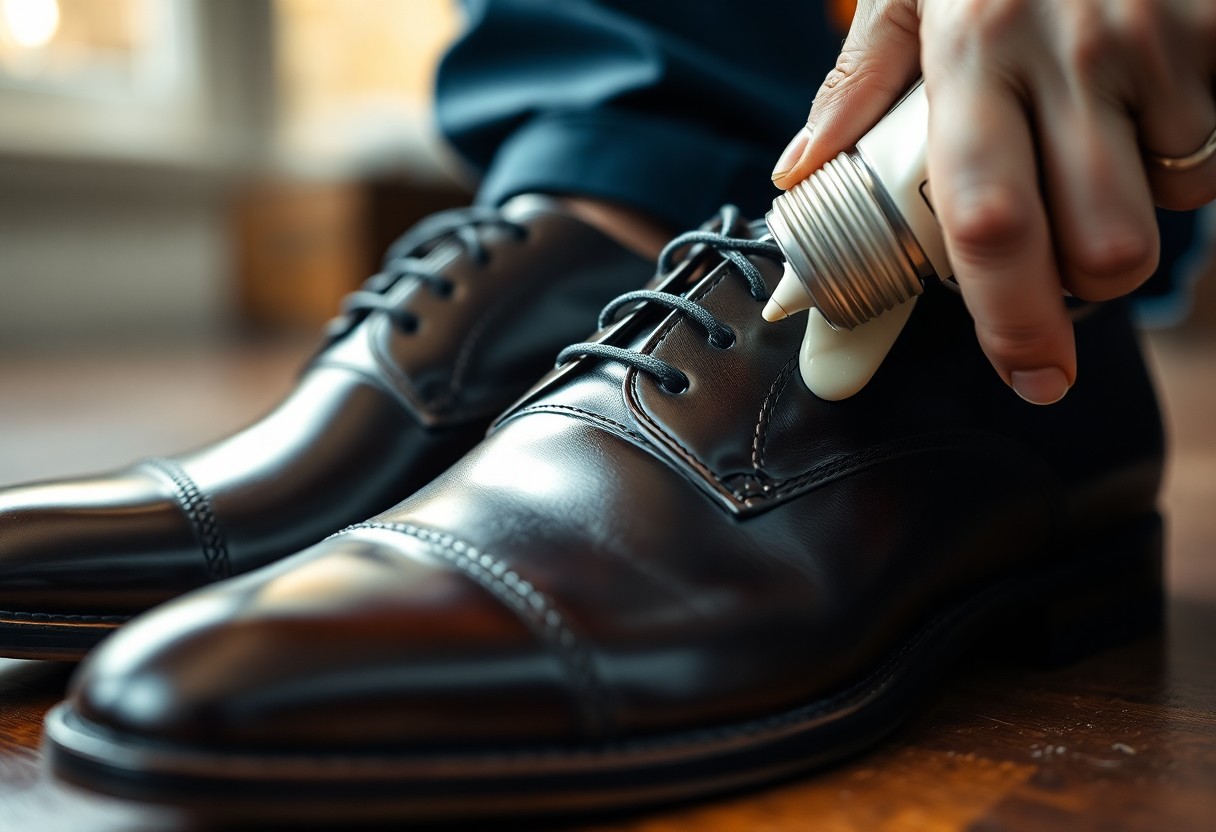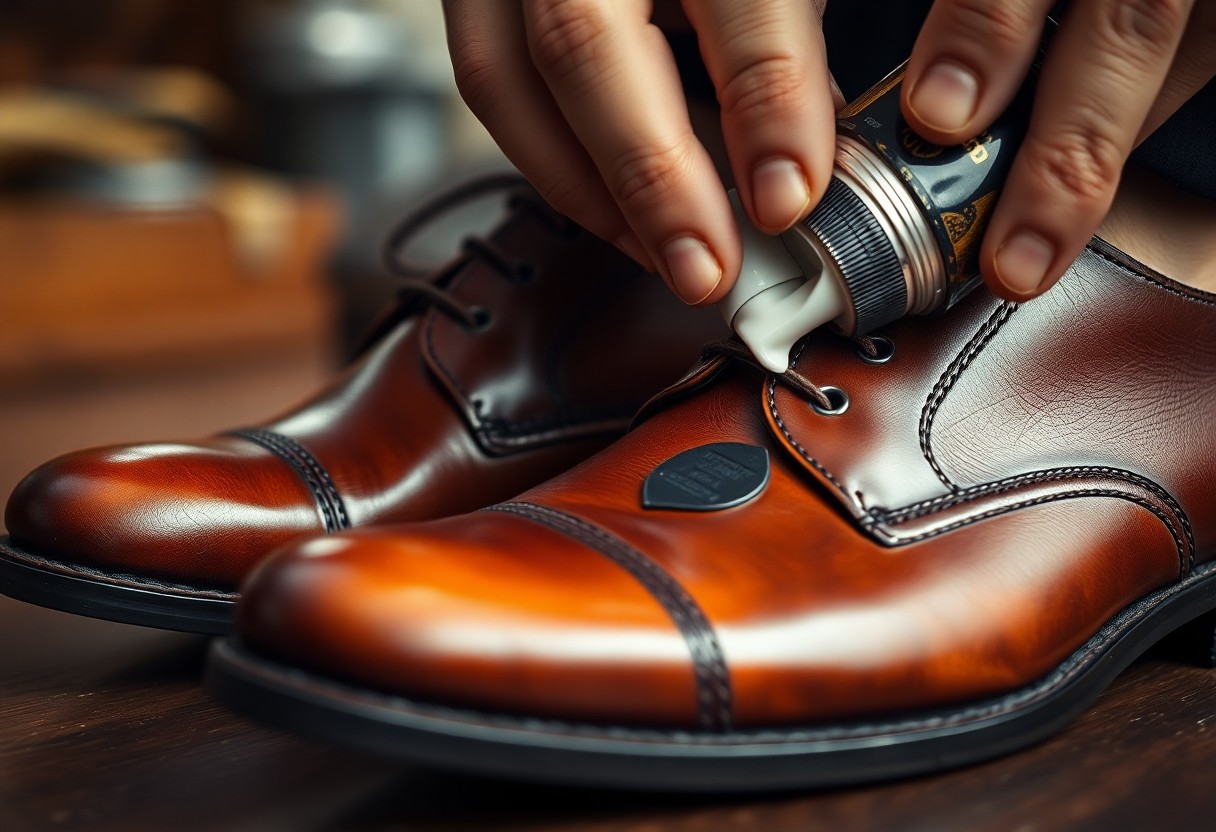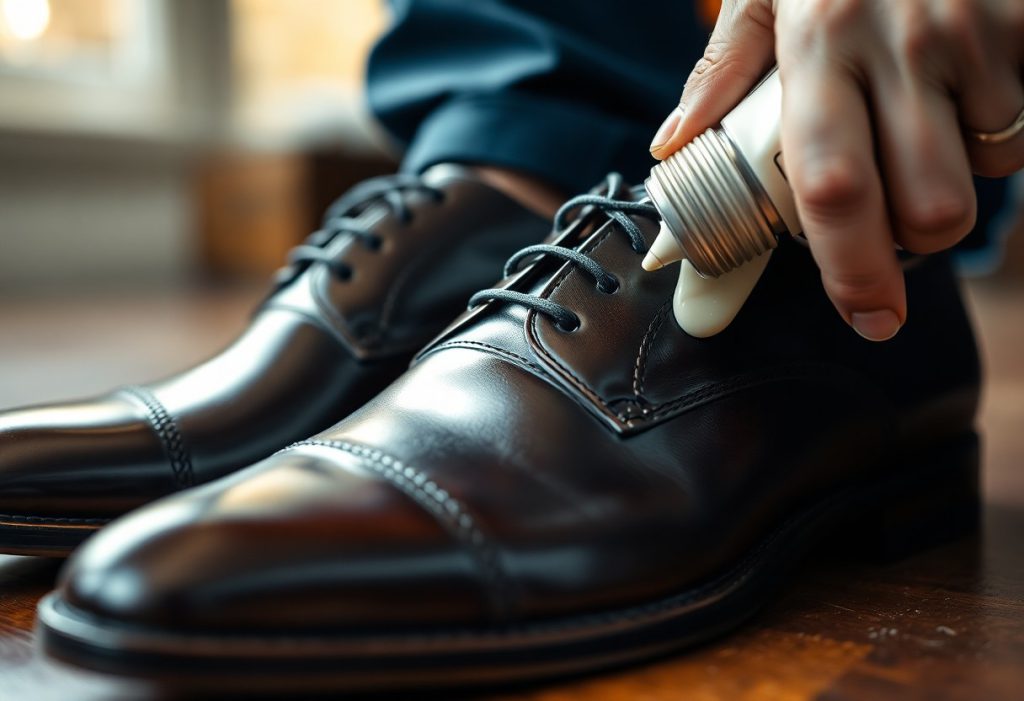Revamping your leather shoes with darker shoe cream can dramatically enhance their visual appeal, transforming them into a statement of elegance and style. By applying several thin layers of cream in increasingly darker shades, you can replicate the effects achieved by professional cobblers. It’s essential to begin with a cream shade that closely matches your shoe’s original color to ensure an even, flawless finish. Choosing premium pigmented creams from trusted brands such as Saphir Medaille d’Or or Boot Black will yield the best results. This technique is particularly beneficial for lighter-colored shoes, where the difference can be quite striking while maintaining a natural appearance.
Ultimate Techniques for Effectively Enhancing Your Shoe Color
To successfully enhance the color of your shoes, it’s crucial to have a well-organized setup along with superior materials. Start by creating a brightly lit and clean workspace where you can dedicate ample time to applying multiple layers of cream. Prior to beginning the color enhancement process, it’s vital that your shoes are thoroughly cleaned and completely dry. This preparatory phase is essential for achieving a uniform and long-lasting finish that will withstand wear and tear over time.
Essential Tools for Successfully Applying Shoe Cream
To avoid any mishaps during your shoe color enhancement project, gather the following necessary tools: application brushes, polishing cloths, and masking tape to shield the soles. Additionally, ensure that you have high-pigment shoe creams, particularly those from reputable brands like Saphir Medaille d’Or or Boot Black, readily available. Be sure to include cleaning supplies and a high-quality leather cleaner to prepare your shoes meticulously before applying the cream.
Selecting the Perfect Cream Colors for Stunning Results
As you embark on your journey to enhance your shoe color, it’s crucial to choose creams that will allow you to gradually achieve your desired shade. Start with a cream color that closely resembles your shoe’s original hue, gradually transitioning to darker shades. This step-by-step approach is especially important for lighter shoes, as it helps prevent uneven coloring that could detract from the overall aesthetic appeal.
The right selection of tools and creams will significantly impact your final outcome. Your cream selections should include a base color that matches the original shoe shade, along with 2-3 darker shades for layering. Opting for high-quality pigmented creams from esteemed brands like Saphir, Boot Black, or Collonil 1909 ensures the best color enhancement results. For lighter shoes, you have the opportunity to achieve a more pronounced darkening effect, while for darker shoes, subtler refinements will help maintain a sophisticated look.
Understanding Color Theory for Masterful Shoe Coloring
A solid grasp of how colors interact is vital for achieving a refined finish when darkening your shoes. Basic color theory can help you avoid common mistakes, such as uneven application or poor shade choices. By utilizing the color wheel, you can understand the relationships between colors like browns, blacks, and burgundies, allowing you to better anticipate how different shoe creams will affect the final look of your leather footwear.
Systematically Transitioning from Lighter to Darker Shades
One of the key principles in shoe coloring is to gradually progress from lighter to darker shades. The effectiveness of this technique lies in making small, incremental adjustments. For example, a light brown shoe can move to a medium brown and then to dark brown, but reversing this process is not advisable. Each layer of cream should be slightly darker than the one applied previously, ensuring that you achieve the best possible results.
Comprehending Color Depth for Superior Shoe Outcomes
Darker shoe creams contain higher concentrations of pigment, enabling them to significantly alter the appearance of your shoes. Always perform a test on a small, inconspicuous area before applying cream to the entire shoe. Quality creams such as Saphir Medaille d’Or or Boot Black offer superior color control and more consistent results, enhancing your overall satisfaction with the completed project.
The effectiveness of your color enhancement largely depends on the methods you employ while layering. Applying multiple thin layers produces better outcomes than using one thick coat. Start with 2-3 layers of a lighter shade before advancing to darker tones. This strategy guarantees even coverage and minimizes the risk of patchy or blotchy results that might compromise your shoes’ overall attractiveness.
Essential Pre-Treatment Steps for Optimal Shoe Cream Application
Before applying darker shoe cream, it is crucial to adhere to a specific series of preparatory steps. Make sure your shoes are completely dry and at room temperature to facilitate optimal cream absorption. This preparation process involves removing any old polish, thoroughly cleaning the shoe’s surface, and protecting areas you wish to keep uncolored. Following these initial steps will help prevent uneven coloring and yield superior results that meet your expectations.
Thorough Techniques for Cleaning Shoe Surfaces
First and foremost, it’s vital to conduct a comprehensive cleaning of your shoes. Use a leather cleaner to remove all dirt, old polish, and oils. Your cleaning process should be gentle yet effective, focusing on creases and seams where residue tends to accumulate. A pristine surface allows the shoe cream to penetrate evenly, which is critical for achieving a flawless finish that enhances the overall beauty of your footwear.
Professional Masking Techniques for Shoe Protection
Properly masking your shoes is essential for achieving professional-looking results. You should protect the sole edges, welts, and any contrasting stitching using masking tape. This precaution will prevent unwanted staining and help maintain the original appearance of these areas, ensuring that your hard work reflects in a polished outcome.
Surface protection involves carefully applying masking tape along the edges where the upper part of the shoe meets the sole. Be sure to cover any decorative features or light-colored stitching that you want to preserve. Based on experiences with Midas boots and TLB Mallorca Artista shoes, adequate masking can save hours of cleanup and yield clean, professional results that you can take pride in.
Step-by-Step Process for Effectively Darkening Shoes
To achieve remarkable results when darkening your shoes, it’s crucial to follow a systematic approach. This process involves gradually building color using high-quality pigmented shoe creams. Light-colored shoes are generally easier to darken, but they require meticulous attention to detail to avoid uneven coloring. Your success will largely depend on the quality of tools you use and the application of multiple thin layers rather than a single thick coat.
Establishing the Base Layer for Effective Color Enhancement
This initial step lays the groundwork for your color enhancement journey. Begin with a shoe cream shade that closely matches your shoe’s original color. Use an application brush for the edges and a polishing cloth for the main surfaces. Always protect the sole edges and stitching with masking tape to prevent any accidental staining. Your first layer serves as a foundation for the richer colors that will follow, ensuring that each subsequent layer adheres properly.
Building Color Depth with Layering Techniques
As you apply multiple layers, gradually introduce darker shades. Focus on applying thin, even layers using high-pigment creams like Saphir Medaille d’Or or Boot Black. Apply 2-3 layers of each shade before moving on to a darker tone. This method ensures your shoes develop a rich and uniform color that enhances their overall sophistication.
Further enhancement hinges on your technique and patience. The final appearance is largely determined by how effectively you work the cream into the leather. Utilize circular motions with your cloth to ensure an even distribution. Allow each layer to dry completely before applying the next. This careful approach can transform light brown shoes into deeper tans or enrich burgundy tones.

Mastering the Multi-Layer Technique for Exceptional Color Enhancement
Not all color enhancements need to be completed in one session. Your success relies on patience and gradual application. This technique involves applying multiple thin layers of shoe cream, starting with lighter shades and progressively transitioning to darker ones, which ensures an even and professional finish that reflects your dedication and skill.
Initiating with Lighter Initial Layers for Optimal Results
The multi-layer application process commences with a shade that closely matches your shoe’s original color. Avoid starting with dark cream immediately, as this can lead to spotting and uneven coloring. Apply 2-3 thin layers of light-colored cream, allowing each layer to dry for approximately 15 minutes before proceeding to the next application. This careful approach sets the stage for beautifully darkened shoes.
Integrating Darker Layers for Enhanced Visual Depth
Once your light base is established, you can gradually introduce darker cream layers. Opt for high-quality pigmented creams, such as Saphir Medaille d’Or or Boot Black, to achieve optimal results. Apply the cream using gentle circular motions to ensure complete coverage while avoiding excess product buildup that could spoil the overall finish.
For the best outcomes, pay special attention to hard-to-reach areas near the sole edges. Always conduct a test on a small, hidden area first to prevent any unwanted color reactions. Continue layering until you achieve your desired shade, typically requiring 3-4 applications of the darker cream to reach the perfect tone.

Key Considerations for Achieving Successful Shoe Color Enhancement
Unlike standard shoe care practices, enhancing color necessitates thoughtful consideration of leather properties and proper product selection. It’s vital to understand your shoe’s base color, leather type, and desired outcome prior to commencing the darkening process. The success of your color enhancement heavily relies on your technique and patience in applying multiple thin layers for the best results.
Understanding the Variability Among Different Leather Types
Different leather types respond differently to color enhancement:
| Leather Type | Color Enhancement Properties |
|---|---|
| Full-grain | Best absorption, even results |
| Top-grain | Good absorption; requires careful application |
| Suede | Not recommended for cream treatment |
| Patent | Cannot absorb cream effectively |
| Corrected-grain | Limited absorption; uneven results possible |
Addressing Common Problem Areas During Application
Common challenges often arise near seams, creases, and toe areas. It’s important to apply cream with extra caution in these zones to avoid excessive color buildup. Identifying potential problem areas before you start will help prevent uneven application, ensuring a smoother overall process.
At the beginning of your color enhancement project, test the cream on a small, hidden area to gauge its effects before proceeding. Your meticulous attention to detail in these delicate areas will directly affect the final quality of your shoe’s appearance. Pay particular care to the welt area, where excess cream can easily accumulate and create uneven patches.
- Apply lighter coats to creases to prevent heavy buildup
- Avoid excessive product near stitching to preserve integrity
- Use masking tape to protect the soles from accidental staining
- Work in small sections to achieve the best results and maintain control
Common Questions About Effective Shoe Color Enhancement
What is the best way to start darkening light-colored shoes with shoe cream?
Begin by selecting a shoe cream color that is closest to your shoe’s original shade. Apply several thin layers using high-pigment shoe cream brands like Saphir Medaille d’Or or Boot Black. Be sure to cover sole edges and stitching with masking tape to protect them during the process. Add 2-3 layers of the lighter shade before transitioning to darker colors for optimal results.
Which tools are essential for applying shoe cream during the color enhancement process?
Utilize an application brush to reach hard-to-access areas near the sole edges, and a polishing cloth for the main surfaces to aid in distributing the cream evenly into the leather. These tools will ensure comprehensive coverage and a smooth application across all shoe areas, contributing to a more polished finish.
What strategies can I employ to guarantee an even color result when darkening shoes?
To achieve a consistent finish, apply multiple thin layers instead of a single thick layer. Start with a lighter shade and gradually progress to darker shades. Use gentle, circular motions with your cloth to work the cream into the leather, allowing each layer to dry completely before applying the following one. This approach effectively prevents spotting and creates a uniform, smooth finish that enhances the overall appearance of your shoes.
The Article How to enhance shoe color using darker shoe cream tips for a polished look appeared first on My Shoes Finder
The Article Enhance Shoe Color with Darker Shoe Cream Tips for a Polished Look Was Found On https://limitsofstrategy.com
The Article Darker Shoe Cream Tips for a Polished Shoe Colour Enhancement First Appeared ON
: https://ad4sc.com

